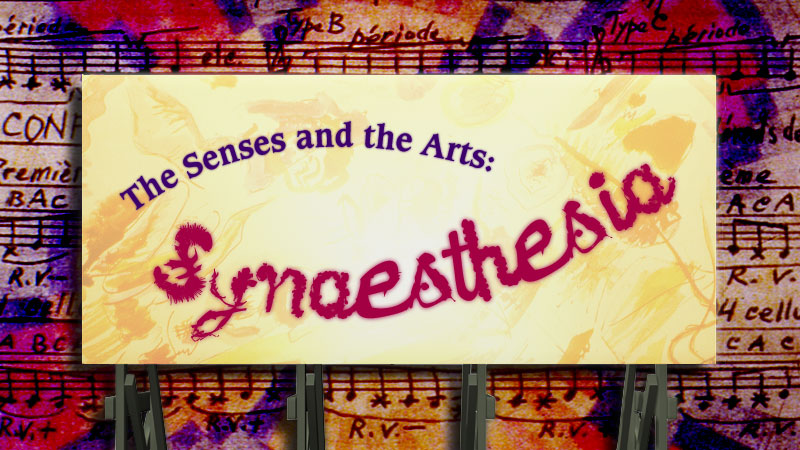Keywords
synaesthesia (Greek)A phenomenon whereby one type of sensory stimulation creates an equivalent perception in a second sense. The initial sensory stimulation is experienced physically; the second, equivalent perception, occurs mentally.
syn = together
aisthesis = to perceive
synaesthete
coloured-hearing
Charles Baudelaire, Correspondences, c. 1852-56
analogy
Alexander Scriabin, Promethius, The Poem of Fire, 1911
symphonic poem
key-colour scheme
keyboard of light
Wladimir Baranoff Rossiné, Piano Optiphonique, 1907
Elizabeth Gourlay, Poems, with Colour, for Scriabin, 1990
Wassily Kandinsky, First Abstract Watercolour, 1910
Wassily Kandinsky, Study for Improvisation No. 7, 1910
Claude Monet, Haystack in the Mist, 1891
Miracle of St. George, 17th C icon
Modest Mussorgsky, Pictures at an Exhibition, 1874 (for piano), 1881 (orchestral version)
Victor Hartmann
Wassily Kandinsky, Concerning the Spiritual in Art, 1911
Wassily Kandinsky, Great Gate of Kiev
Mark-Anthony Turnage, Three Screaming Popes, 1988-89
Francis Bacon, Study after Velazquez’s Portrait of Pope Innocent X, 1953
Diego Velasquez, Pope Innocent X, 1650
Francis Bacon, Pope I, 1951
Rheostatics, Music Inspired by the Group of Seven, 1995-96
A.Y. Jackson, Northern Lake, c. 1928
Norman McLaren, Begone Dull Care, 1949
drawn sound
